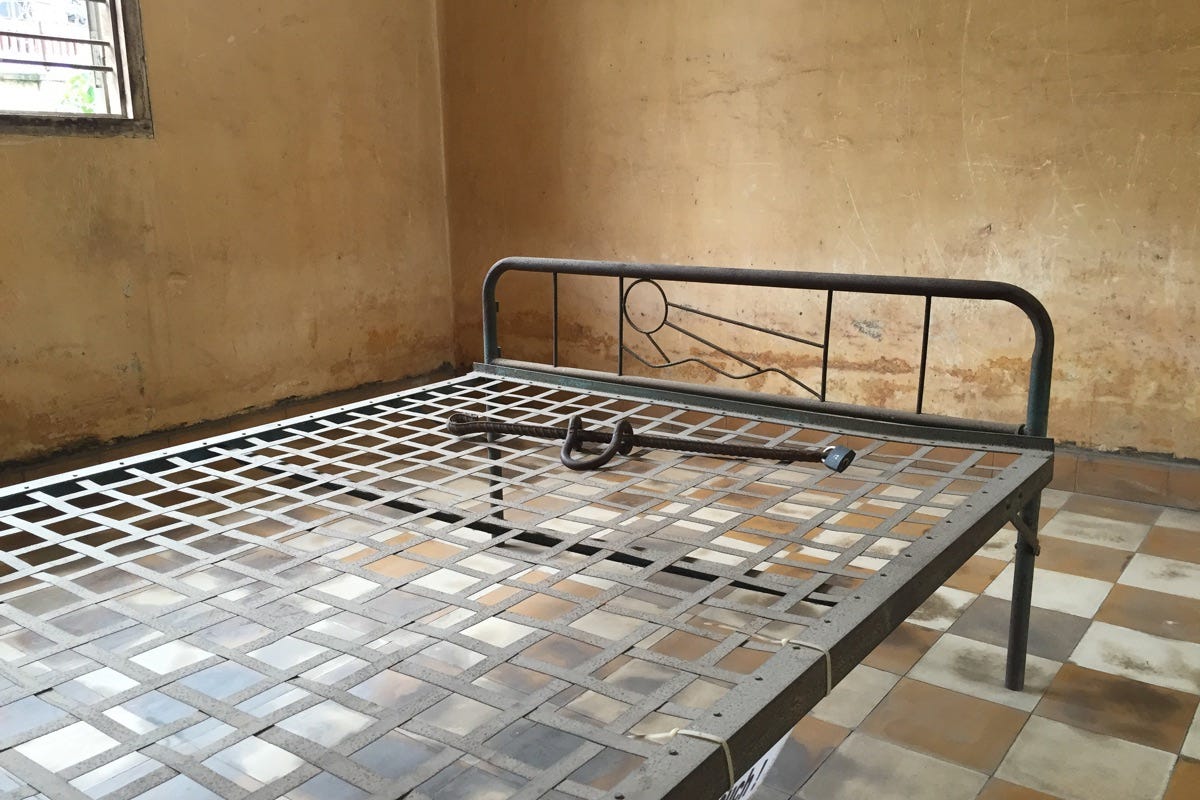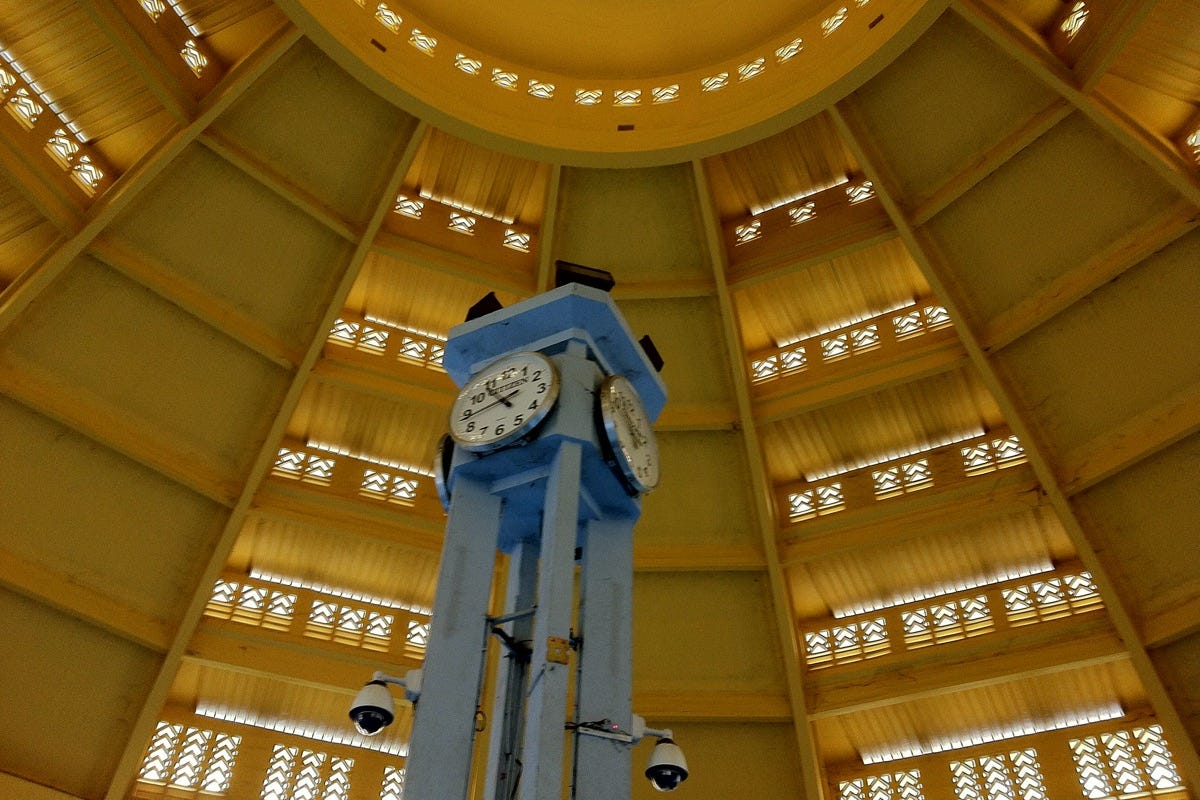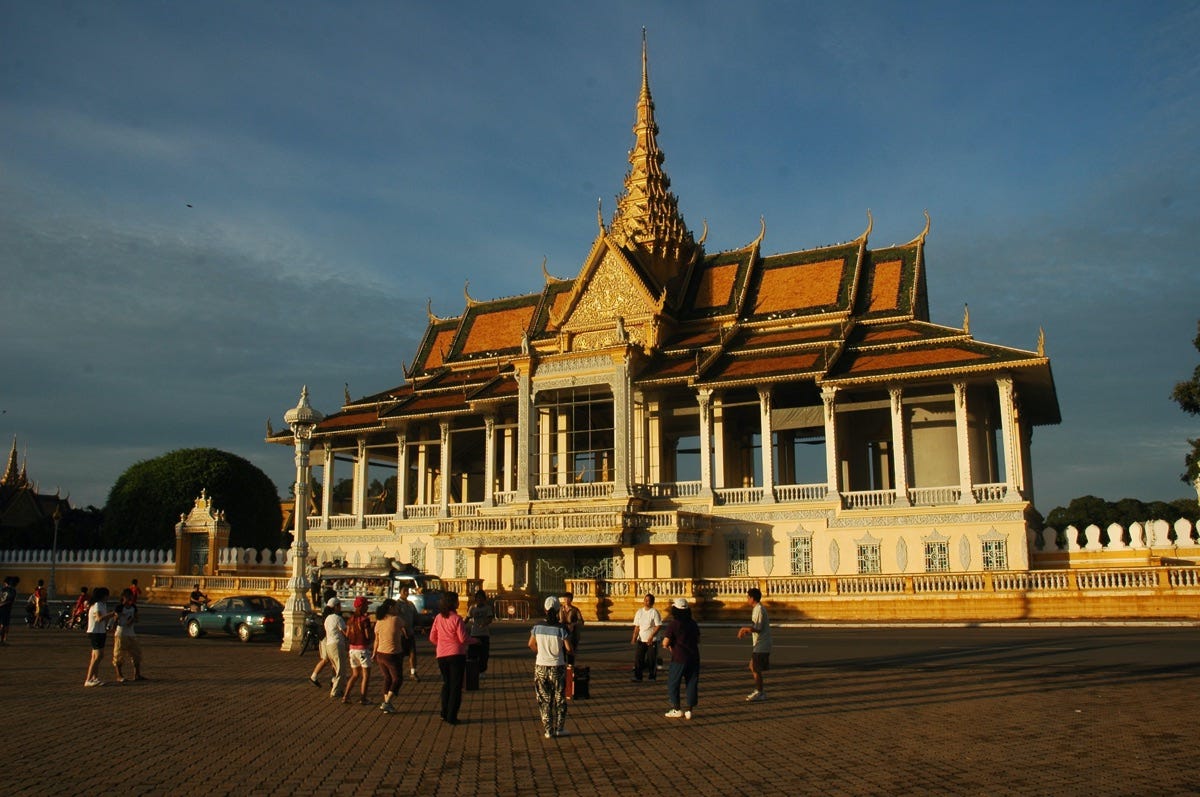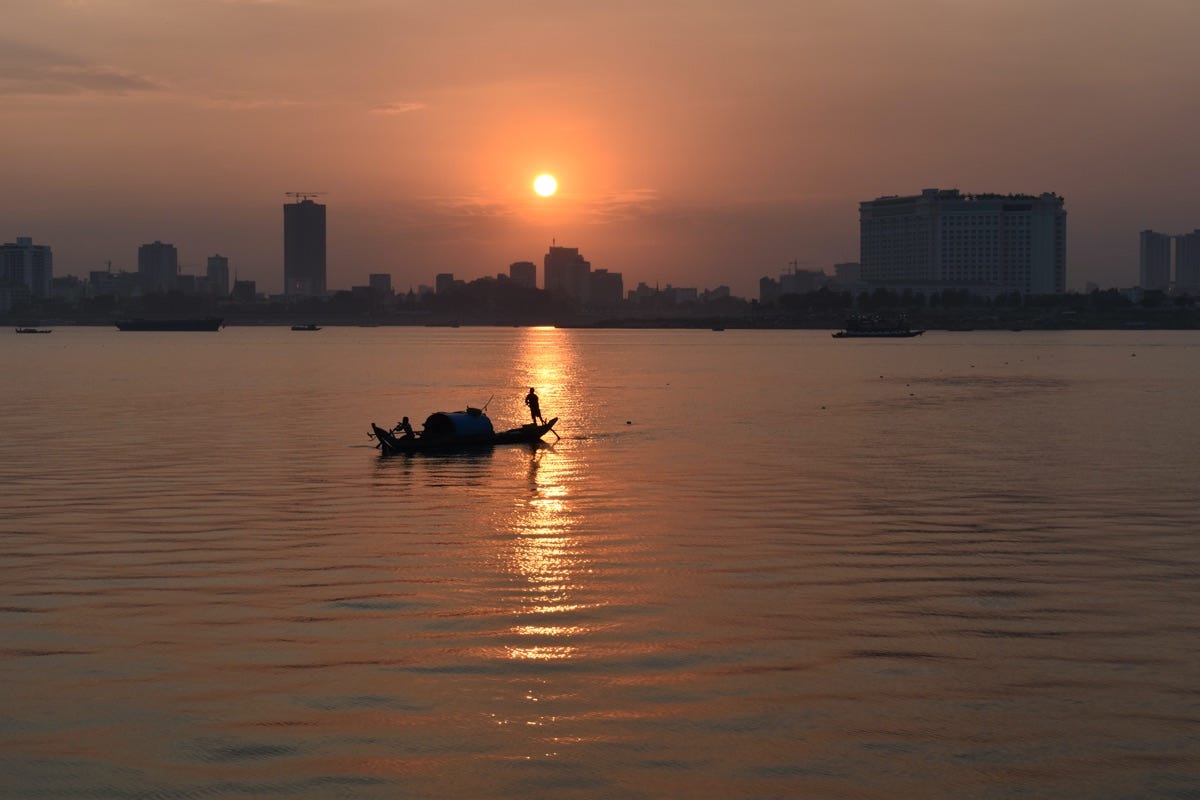There’s no Southeast Asian city that has a larger place in my heart than Phnom Penh. Over time it has played home to my highest highs and lowest lows—etched into who I have become. The city punches well above its weight for a place I only lived in for two years, and have visited a dozen or so times beside. But that’s Phnom Penh for you.
There’s always another storm on the way. Photo: Stuart McDonald.
I first had the opportunity to visit the city in the early 1990s, after finishing a trip through Vietnam. My companion was flying in from Ho Chi Minh City and wanted me to go with. Spooked by the kidnapping of Jean-Michel Braquet, Mark Slater, and David Wilson, I said no. I opted for a flight direct to Bangkok, enjoying the country from the safety of 35,000 feet. It would be years before I visited and then finally moved there.
I struggle to put my finger on what it is for me about Phnom Penh—others find it a little easier. When we live there, it is a low–rise city, and the traffic is nowhere near as bad as now. A motodop is on almost every street corner, the rider reclined impossibly, snoozing. I walk out and yell “moto!”, one leaps up, pushes his cap back, kicks on his flip flops and wheels around to pick me up.
A cyclo with flair. Photo: Stuart McDonald.
We live at the bottom of BKK1, a better serviced part of the city. That our electricity is (mostly) reliable is a distinguishing feature from other districts. The roads though are still rough, ours is half sealed—dusty in the dry, flooded in the wet.
The moto takes me up Pasteur. Past the cafes and walls with NGO signs. Past the alley entrance to Wat Langka lined with religious statues. There is never much traffic and the moto is never in a hurry. We hit Sihanouk Boulevard and wheel around the monument, then start dog–legging towards Phsar Thmei.
On the way to Wat Langka. Photo: Stuart McDonald.
The motodop drivers are invariably men—some my age, some far older. They never really look where they’re going—aside from straight ahead of course. Everyone seems to work on the assumption others will see them and veer accordingly. It works most of the time.
I guess, when you’ve lived through the Khmer Rouge period, checking for traffic is an after thought. Sitting on the bike, I wonder if my driver thinks about that period often. As we coast by local cafes with dozens of banded, bright coloured banana chairs, what is on my driver’s mind?
The unadulterated horror to Tuol Sleng. Photo: Stuart McDonald.
That period impacted on any Khmer of a certain age. I can’t think of another country that survived such a universal cataclysm. Today, Khmers continue to suffer thanks to Hun Sen’s kleptocracy.
The moto drops me by Phsar Thmei, a butter yellow coloured ziggurat dropped from the sky. The cavernous centre is loaded with jewellery and precious stone sellers. The outer reaches offer tourist tat, fresh produce, cut flowers or clothes depending on where I wander. Kramas everywhere.
Within Phsar Thmei. Photo: Stuart McDonald.
On foot, I head down leafy Street 130 towards the river. Past the stuffed baguette sellers—stomach torpedos to some—and sugar cane juice carts. I turn down a shoe shine from the boys who scuttle by in the shade. Near the river but not quite on, I sit in a cafe for a $1 beer or a coffee. I buy a copy of the Cambodia Daily or Phnom Penh Post (this is back when they were worth reading!) off one of the paper sellers. They return when I’m finished and offer to buy it back for half what they sold it for.
Then to the Tonle Sap. I turn right and walk down the promenade to a bump in the bank where some huge trees throw generous shade. Often sampans gather at the bank here, good for a sunset float on the water. I sit and watch. Kids come up wanting to practise their English. The ever–present card game scammers stroll, looking for new prey.
Big river. Photo: Stuart McDonald.
Further along, towards the palace, more coffee or beer at another street front cafe. Sometimes from the fabulous deck at the FCC. As far as people watching goes, there are few spots in the world with as varied a crowd as this stretch.
Onwards to the park in front of the palace. Khmers relax on the grass, interspersed with balloon and snack sellers. There is always a bit of an understated festive feel here in the late afternoon and evening. The palace and temple roofs poke above the yellow, white edged palace walls.
Working out. Photo: Stuart McDonald.
Just after we moved to Phnom Penh, we were robbed here. Sam and I in cyclos on the way home from a lazy afternoon by the river. A motodop raced past and snatched her purse. We’d just been saying how happy we were to have moved to Phnom Penh from Bangkok, then in a blink of an eye her handbag was gone.
“It had my passport in it!” Sam exclaimed. I said something like “Oh well, just get another one.”
“And yours!” she followed up with—bye bye Thai work permit!
The old and the new. Photo: Stuart McDonald.
Sam called one of her colleagues at Agence France Presse, Reach Sambath, for advice. Sambath, bless him, accompanied us to the police station for the reporting process.
He sadly died in 2011, just 47 years old. I was reading his obituary while writing this piece and this line leapt out:
“Mr. Reach Sambath sold ice and ferried passengers on a bicycle to support himself after the fall of the Khmer Rouge while he attended elementary and high school and learned English.”
From these humble beginnings, Sambath went on to report for AFP and the New York Times. Later, he was spokesman for the UN–backed Khmer Rouge tribunal. He was “a spokesperson for ghosts” he said.
Cambodia needs more Reach Sambaths and fewer, far fewer, Hun Sens.
Tomorrow: Lets eat.





















Share this post